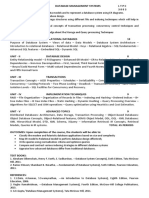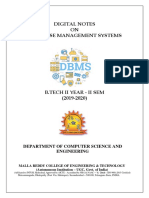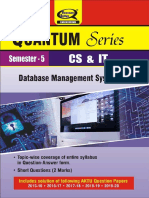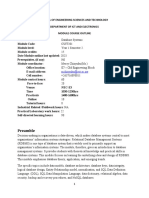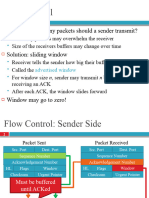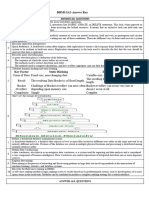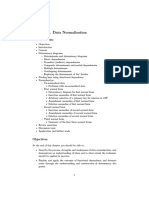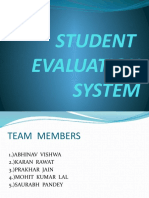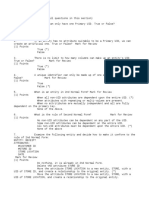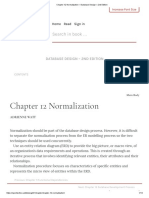0% found this document useful (0 votes)
102 views2 pagesDatabase Management Systems Course
This document outlines the objectives, topics, and outcomes of a course on Database Management Systems. The course covers fundamental concepts like data modeling, relational algebra, SQL, database design using ER diagrams and normalization. It also covers topics like transactions, concurrency control, recovery techniques, database implementation including indexing and query processing. The final unit covers advanced topics such as distributed databases, NoSQL databases, and database security. The course aims to help students construct SQL queries, design databases, handle transactions, apply indexing strategies, and choose suitable databases based on requirements.
Uploaded by
Suresh KumarCopyright
© © All Rights Reserved
We take content rights seriously. If you suspect this is your content, claim it here.
Available Formats
Download as DOCX, PDF, TXT or read online on Scribd
0% found this document useful (0 votes)
102 views2 pagesDatabase Management Systems Course
This document outlines the objectives, topics, and outcomes of a course on Database Management Systems. The course covers fundamental concepts like data modeling, relational algebra, SQL, database design using ER diagrams and normalization. It also covers topics like transactions, concurrency control, recovery techniques, database implementation including indexing and query processing. The final unit covers advanced topics such as distributed databases, NoSQL databases, and database security. The course aims to help students construct SQL queries, design databases, handle transactions, apply indexing strategies, and choose suitable databases based on requirements.
Uploaded by
Suresh KumarCopyright
© © All Rights Reserved
We take content rights seriously. If you suspect this is your content, claim it here.
Available Formats
Download as DOCX, PDF, TXT or read online on Scribd
/ 2





